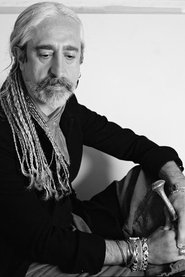
A life is always framed by a story, but existence continuously searches for another empty canvas. 1955. It starts with the streets, smells and sounds of Beirut, Lebanon. In beginnings, reactions are instinctive and purity is not compromised. Vahé Berberian, an Armenian painter, author, playwright, director and actor, is able to hold on to that instinct and purity through all his journeys, becoming the phenomena known as Vahé. His parents’ home in Beirut served as a stage where personalities from the worlds of theater, literature and the arts interacted passionately. Conversation flowed and humor filtered intensity. This is where Vahe, the storyteller, was formed. 1973. Leaving the safety of the familial nest, exchanging the familiar with the unknown, Vahé becomes part of the counterculture and travels through Eastern and Western Europe. Upon returning home, he lives the onset of the Lebanese Civil War. 1976. Devastated, Vahé reluctantly relocates to Los Angeles. Four years later, he graduates with honors, receiving a degree in journalism, while fervently pursuing art. “Painting is about creating history. I start with the empty canvas and nothing in mind. My first coat is my first mistake. My second coat is my second mistake. With every layer I erase the previous one, but nothing is completely eliminated. There are always traces. Eventually, the layers evolve into something from which I cannot take anything away.” Different settings and realities chisel, break down, blend and mold an identity. This identity is innately about combinations. The urgency to combine is what predominately resonates in all his work. His stand up comedies recognize absurdity and embrace laughter. His plays unfold absurdity and validate coexistence. His novels magnify absurdity and blur the lines between reality and fantasy. His paintings are the absurd. This process has lent itself to over 65 solo and group exhibitions, four one man shows, two published novels, and over a dozen plays written and directed by Vahe, worldwide. “Ultimately I suppose I am a story teller, whether in words or paint. I started out as a figurative painter. Throughout the years, gradually, as I got rid of everything that was decorative or didactic, my work became more and more abstract, eventually minimalist. Occasionally some of the old elements creep in and survive the process of purification. The perfect painting is the empty canvas. I fill it up because I love the process of painting.”
